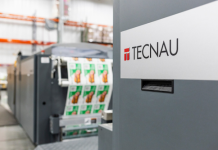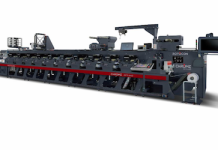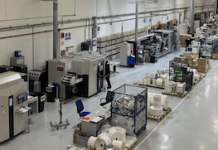Leon Minnie, manager of production print for Konica Minolta South Africa, discusses the misconceptions of print, such as its adverse impact on the environment. He says that whether we e-mail or send a letter, we consume energy and resources. There are environmental trade-offs in every choice we make, and there is no simple ‘right answer’.
Day in and day out, we are faced with messages about the harm that printing does to our environment. This is partly due to a misconception that the paper used in your company printer is from a rainforest that was torn down. Few people realise that all paper in South Africa is produced from plantation-grown trees, recycled paper or bagasse (sugar cane fibre). We are told that tablets, laptops and other smart devices are eco-friendly with no impact on our forestry, but this is simply not true.
South Africa's timber plantations lock up 900 million tons of carbon dioxide a year, which is a massive environmental service and a key means of mitigating climate change. Forests mitigate greenhouse gas emissions by absorbing Carbon dioxide and releasing oxygen through the natural process of photosynthesis. If it weren’t for the pulp and paper industry operating worldwide for the last 150 years, the carbon dioxide levels in the atmosphere would be five percent higher (about 0.5 degrees) than they are at present. Managed forests play an important role for a sustainable future. Over 80 percent of South African plantations are certified by the Forest Stewardship Council (FSC), ranking South Africa as having the highest level of international certification in the world. Some 600 million trees across 762,000 hectares are specifically farmed for use in pulp and paper manufacturing, just as maize was planted for our cereal, and wheat for our bread.
While the print industry cannot stop the digital age of communication and its convenience, the electronic distribution of information should not be flaunted as being more environmentally friendly than print. Every decision to communicate has some impact on the environment. In fact, server farms that power computers have become the fastest growing users of fossil fuel in the world, and the amount of energy they use is doubling every year. Consider that manufacturing a computer typically requires the mining and refining of dozens of minerals and metals, including gold, silver and palladium, as well as the extensive use of plastics and hydrocarbon solvents. Most computers come from overseas on either ships or planes – the two types of transportation with the greatest carbon footprint. And that's before they are shipped on trains or trucks domestically.
One doesn’t realise that reading a document on screen produces more carbon dioxide than printing out the same document. A printed document can be read over and over again without further emissions and can also be recycled. For example, whether we e-mail or send a letter, we consume energy and resources. There are environmental trade-offs in every choice we make, and there is no simple ‘right answer.’ Effective stewardship requires a careful examination of the bigger picture, one that encompasses the entire lifecycle, from raw materials to energy use and end of life, to fully understand the impact and performance of both electronic media and print on paper.
• A 700-page printed document emits 85g of carbon dioxide (one copy can be read over and over again without further emissions).
• Reading it on a computer for one hour emits 226g of carbon dioxide every time.
• Burning the 700-page document to CD is estimated to emit 300g of carbon dioxide for every copy.
• Burning it to DVD is estimated to emit 350g of carbon dioxide for every copy.
Looking at our own country, paper’s impact on the South African economy has been a key contributor since 1970 and its annual growth surpasses the international average. Much of this was invested in local resources, innovation and people power. In 2013, the forestry-to-paper value-add to the local economy was R18.2 billion and equated to 0.6% to South Africa’s gross domestic product. Around 150,000 people are employed in this sector covering forestry pulp and paper manufacturing to recycling, according to Forestry South Africa. Imagine this impact on a global scale?
Modern commercial printing has significantly enhanced sustainable practices in recent years. From recycling to energy usage, commercial printers and manufacturers, like Konica Minolta, are making great strides in reducing their environmental footprints. These include:
• Purchasing products, materials and services from individuals and organisations that demonstrate a commitment to sustainability.
• Gaining third-party certification credentials.
• Reducing the impact of chemicals by using vegetable-based inks, eco-friendly soy inks, alcohol-free chemistry and aqueous coatings.
• Using biodegradable packaging materials and waste paper instead of petroleum-based foam peanuts.
• Using a higher percentage of paper grades that are recycled, post-consumer and third-party forest certified to be from responsible sources.
• Educating employees on environmental information, recycling procedures and certification training.
• Equipping presses with ink monitoring devices to reduce waste.
• Recycling printing plates, to name a few.
A future without print or paper would have a devastating effect on society and is not the immediate answer. It is the paper, but equally so, the print industry’s responsibility to be more influential in addressing governments’ and corporates’ ideology or ignorance of a paperless world. The fact is, paper is still as relevant as it was before electronic devices and should be promoted as a key product for environmental sustainability. It should have an equal importance to future electronic technology and water. The credentials and activities of paper are hardly being adequately communicated to the sector’s key stakeholders.
We have international summits about global warming and sustainability for our children, but yet we are blind to the biggest and most impactful product that addresses those requirements in totality – the paper and print industry is ignored as a suitable commodity for our future society. Very few industries can compete with the environmental benefits of pulp and paper, whether these are in first or third-world countries.





















